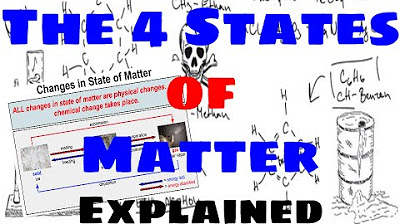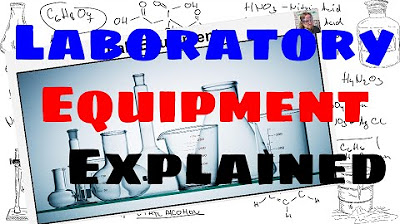What are Chromosomes?
Summary
TLDRIn this educational video, Mr. Andersen explains the concept of chromosomes and their role in cellular biology. He distinguishes between prokaryotic and eukaryotic cells, highlighting how chromosomes in eukaryotic cells are organized within the nucleus. The video explores the structure of chromosomes, genes, and base pairs, comparing them to a book or encyclopedia for better understanding. The speaker breaks down complex genetic terms—genomes, chromosomes, genes, and base pairs—defining them and explaining their hierarchical relationship. The video provides an engaging overview of how DNA is organized, stored, and utilized within cells.
Takeaways
- 😀 A chromosome is a structure made of DNA and proteins that carries genetic information inside the nucleus of eukaryotic cells, or as a single loop of DNA in prokaryotic cells.
- 😀 The genome represents all the genetic material in a cell, including DNA in chromosomes and in certain organelles like mitochondria (animals) or chloroplasts (plants).
- 😀 In prokaryotic cells (like bacteria), there is only one chromosome, which is a single loop of DNA, while eukaryotic cells have multiple chromosomes inside their nuclei.
- 😀 Chromosomes are like sections of a larger encyclopedia (the genome), breaking down genetic information into manageable and usable parts for replication and division.
- 😀 A gene is a specific segment of DNA within a chromosome that provides the instructions to make a specific protein.
- 😀 The base pair is the smallest unit of genetic information in DNA, consisting of pairs of nitrogenous bases: Adenine with Thymine, and Cytosine with Guanine.
- 😀 Genes are the recipes for making proteins, and the human body is primarily composed of proteins that are encoded by genes.
- 😀 A gene may be surrounded by non-coding regions of DNA that regulate its expression, turning the gene 'on' or 'off'.
- 😀 DNA is tightly wound around histone proteins to form structures called nucleosomes, which help package and organize the DNA efficiently.
- 😀 During cell division, chromosomes condense into an X-shape, with the centromere at the center and two sister chromatids carrying identical genetic material.
- 😀 The genome in a typical human cell is about 3 meters long, and it is tightly packed into chromosomes to fit within the cell’s nucleus.
Q & A
What is the main focus of the video?
-The main focus of the video is to explain what chromosomes are, how they are structured, and how they relate to genetic information in cells.
What is the difference between prokaryotic and eukaryotic cells in terms of chromosomes?
-Prokaryotic cells, like bacteria, typically have a single, looped chromosome located in the nucleoid region. Eukaryotic cells, like those in humans, plants, and fungi, have multiple chromosomes located in the nucleus.
What is a genome and where is it found?
-A genome is the complete set of genetic material in an organism, including all the genes in the chromosomes within the nucleus, as well as small amounts of genetic material in mitochondria (and chloroplasts in plants).
How do chromosomes help in the organization and division of genetic material?
-Chromosomes are segments of DNA that have been tightly coiled and organized, making it easier to store and divide the genetic material during cell division.
What happens during interphase in relation to chromosomes?
-During interphase, chromosomes duplicate their genetic material, resulting in two sister chromatids joined by a centromere, preparing the chromosomes for cell division.
What is the role of histone proteins in the structure of chromosomes?
-Histone proteins play a crucial role in organizing and packaging DNA. DNA wraps around histone proteins to form structures called nucleosomes, which help tightly package DNA into chromosomes.
What are genes and what is their function?
-Genes are specific sections of DNA that code for particular proteins. These proteins play key roles in building and maintaining the structure and function of organisms.
What are base pairs and how do they contribute to genetic coding?
-Base pairs are the building blocks of DNA, consisting of pairs of nitrogenous bases (adenine with thymine, and cytosine with guanine). They form the structure of DNA and code for the amino acids that make up proteins.
How does the analogy of an encyclopedia relate to chromosomes?
-The analogy compares chromosomes to sections of an encyclopedia. Just as a large book is divided into smaller, manageable sections, the genome is broken into chromosomes to make genetic information easier to use and replicate.
How do the different types of cells store genetic information?
-In prokaryotic cells, genetic information is stored in a single, circular chromosome. In eukaryotic cells, genetic material is stored in multiple linear chromosomes within the nucleus, with additional small amounts in mitochondria (and chloroplasts in plants).
Outlines

هذا القسم متوفر فقط للمشتركين. يرجى الترقية للوصول إلى هذه الميزة.
قم بالترقية الآنMindmap

هذا القسم متوفر فقط للمشتركين. يرجى الترقية للوصول إلى هذه الميزة.
قم بالترقية الآنKeywords

هذا القسم متوفر فقط للمشتركين. يرجى الترقية للوصول إلى هذه الميزة.
قم بالترقية الآنHighlights

هذا القسم متوفر فقط للمشتركين. يرجى الترقية للوصول إلى هذه الميزة.
قم بالترقية الآنTranscripts

هذا القسم متوفر فقط للمشتركين. يرجى الترقية للوصول إلى هذه الميزة.
قم بالترقية الآنتصفح المزيد من مقاطع الفيديو ذات الصلة

The Four States of Matter - Explained

Lab Equipment - Explained

3. Gr 11 Life Sciences - Population Ecology - Theory 3 Mark Recapture Method

4. Gr 11 Life Sciences - Population Ecology - Worksheet 1

PENJASKES KELAS X - SOFTBALL

Introduction to Culture [AP Human Geography Review Unit 3 Topic 1]

Menentukan Mr ( massa molekul relatif )
5.0 / 5 (0 votes)
